The entorhinal cortex of the monkey: VI. Organization of projections from the hippocampus, subiculum, presubiculum, and parasubiculum
- PMID: 32656783
- PMCID: PMC8933866
- DOI: 10.1002/cne.24983
The entorhinal cortex of the monkey: VI. Organization of projections from the hippocampus, subiculum, presubiculum, and parasubiculum
Abstract
The organization of projections from the macaque monkey hippocampus, subiculum, presubiculum, and parasubiculum to the entorhinal cortex was analyzed using anterograde and retrograde tracing techniques. Projections exclusively originate in the CA1 field of the hippocampus and in the subiculum, presubiculum, and parasubiculum. The CA1 and subicular projections terminate most densely in Layers V and VI of the entorhinal cortex, with sparser innervation of the deep portion of Layers III and II. Entorhinal projections from CA1 and the subiculum are topographically organized such that a rostrocaudal axis of origin is related to a medial-to-lateral axis of termination. A proximodistal axis of origin in CA1 and distoproximal axis in subiculum are related to a rostrocaudal axis of termination in the entorhinal cortex. The presubiculum sends a dense, bilateral projection to caudal parts of the entorhinal cortex. This projection terminates most densely in Layer III with sparser termination in Layers I, II, and V. The same parts of entorhinal cortex receive a dense projection from the parasubiculum. This projection terminates in Layers III and II. Both presubicular and parasubicular projections demonstrate the same longitudinal topographic organization as the projections from CA1 and the subiculum. These studies demonstrate that: (a) hippocampal and subicular inputs to the entorhinal cortex in the monkey are organized similar to those described in nonprimate species; (b) the topographic organization of the projections from the hippocampus and subicular areas matches that of the reciprocal projections from the entorhinal cortex to the hippocampus and the subicular areas.
Keywords: hippocampal formation; memory; nonhuman primate; subiculum, presubiculum, parasubiculum.
© 2020 Wiley Periodicals LLC.
Conflict of interest statement
CONFLICT OF INTEREST
The authors do not report a conflict of interest.
Figures
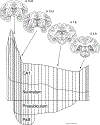

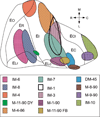
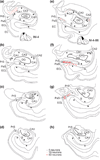
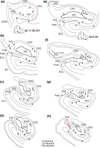
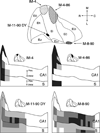




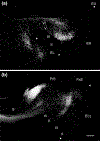
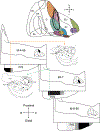
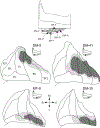
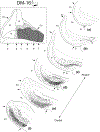
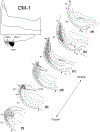


Similar articles
-
The commissural connections of the monkey hippocampal formation.J Comp Neurol. 1984 Apr 10;224(3):307-36. doi: 10.1002/cne.902240302. J Comp Neurol. 1984. PMID: 6715582
-
Projections from the presubiculum and the parasubiculum to morphologically characterized entorhinal-hippocampal projection neurons in the rat.Exp Brain Res. 1994;101(1):93-108. doi: 10.1007/BF00243220. Exp Brain Res. 1994. PMID: 7843307
-
Entorhinal cortex of the monkey: V. Projections to the dentate gyrus, hippocampus, and subicular complex.J Comp Neurol. 1991 May 15;307(3):437-59. doi: 10.1002/cne.903070308. J Comp Neurol. 1991. PMID: 1713237
-
Connections between the retrosplenial cortex and the hippocampal formation in the rat: a review.Hippocampus. 1992 Jan;2(1):1-11. doi: 10.1002/hipo.450020102. Hippocampus. 1992. PMID: 1308170 Review.
-
Reciprocal connections between the amygdala and the hippocampal formation, perirhinal cortex, and postrhinal cortex in rat. A review.Ann N Y Acad Sci. 2000 Jun;911:369-91. doi: 10.1111/j.1749-6632.2000.tb06738.x. Ann N Y Acad Sci. 2000. PMID: 10911886 Review.
Cited by
-
Amidst an amygdala renaissance in Alzheimer's disease.Brain. 2024 Mar 1;147(3):816-829. doi: 10.1093/brain/awad411. Brain. 2024. PMID: 38109776 Free PMC article.
-
Neuroglobin deficiency increases seizure susceptibility but does not affect basal behavior in mice.J Neurosci Res. 2022 Oct;100(10):1921-1932. doi: 10.1002/jnr.25105. Epub 2022 Jul 13. J Neurosci Res. 2022. PMID: 35822521 Free PMC article.
-
Preferential signal pathways during the perception and imagery of familiar scenes: An effective connectivity study.Hum Brain Mapp. 2023 Jul;44(10):3954-3971. doi: 10.1002/hbm.26313. Epub 2023 May 23. Hum Brain Mapp. 2023. PMID: 37219891 Free PMC article.
-
How Can Hearing Loss Cause Dementia?Neuron. 2020 Nov 11;108(3):401-412. doi: 10.1016/j.neuron.2020.08.003. Epub 2020 Aug 31. Neuron. 2020. PMID: 32871106 Free PMC article. Review.
-
The hearing hippocampus.Prog Neurobiol. 2022 Nov;218:102326. doi: 10.1016/j.pneurobio.2022.102326. Epub 2022 Jul 21. Prog Neurobiol. 2022. PMID: 35870677 Free PMC article. Review.
References
-
- Amaral DG, & Price JL (1983). An air pressure system for the injection of tracer substances into the brain. Journal of Neuroscience Methods, 9 (1), 35–43. - PubMed
Publication types
MeSH terms
Grants and funding
LinkOut - more resources
Full Text Sources
Miscellaneous

